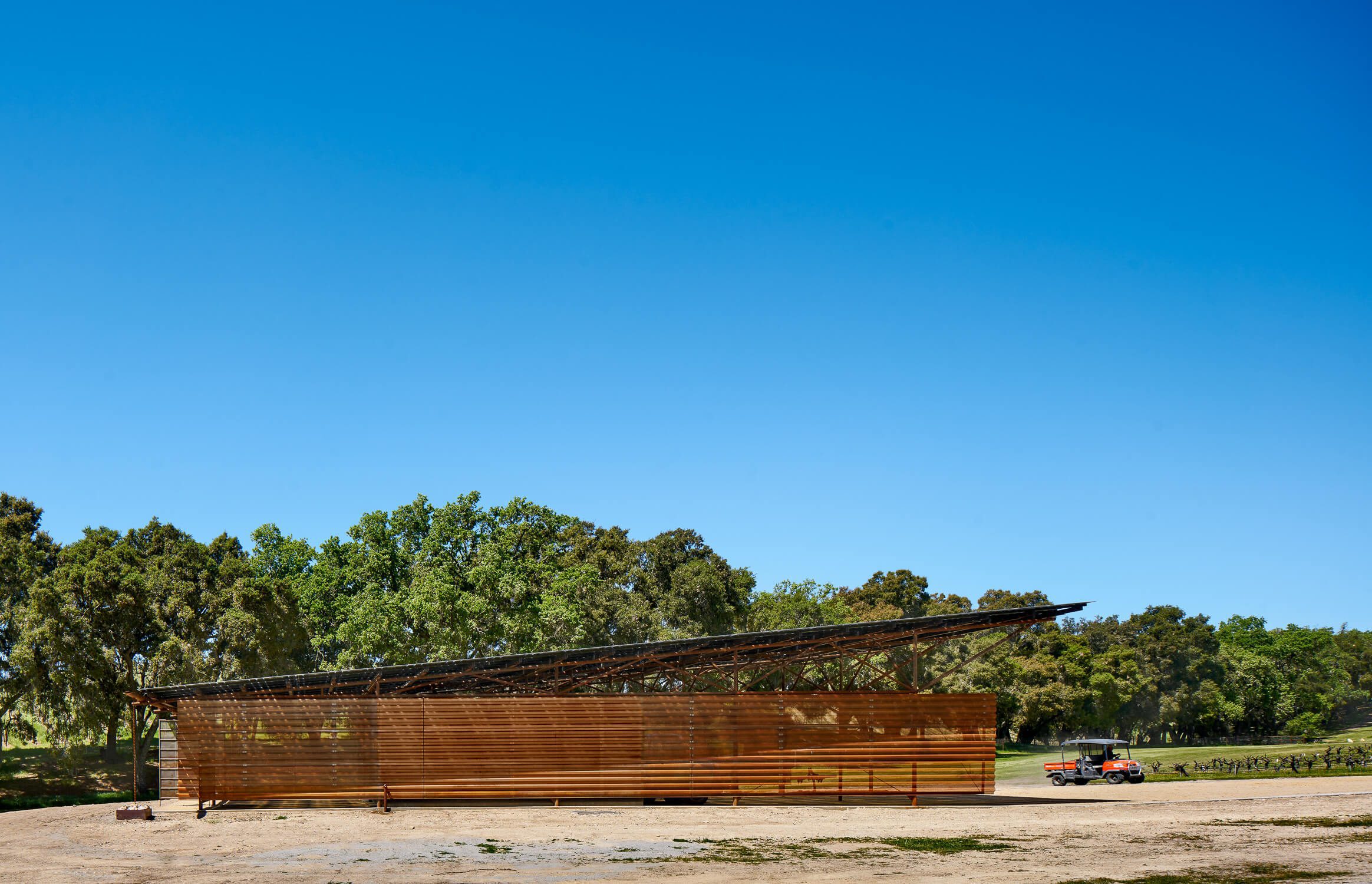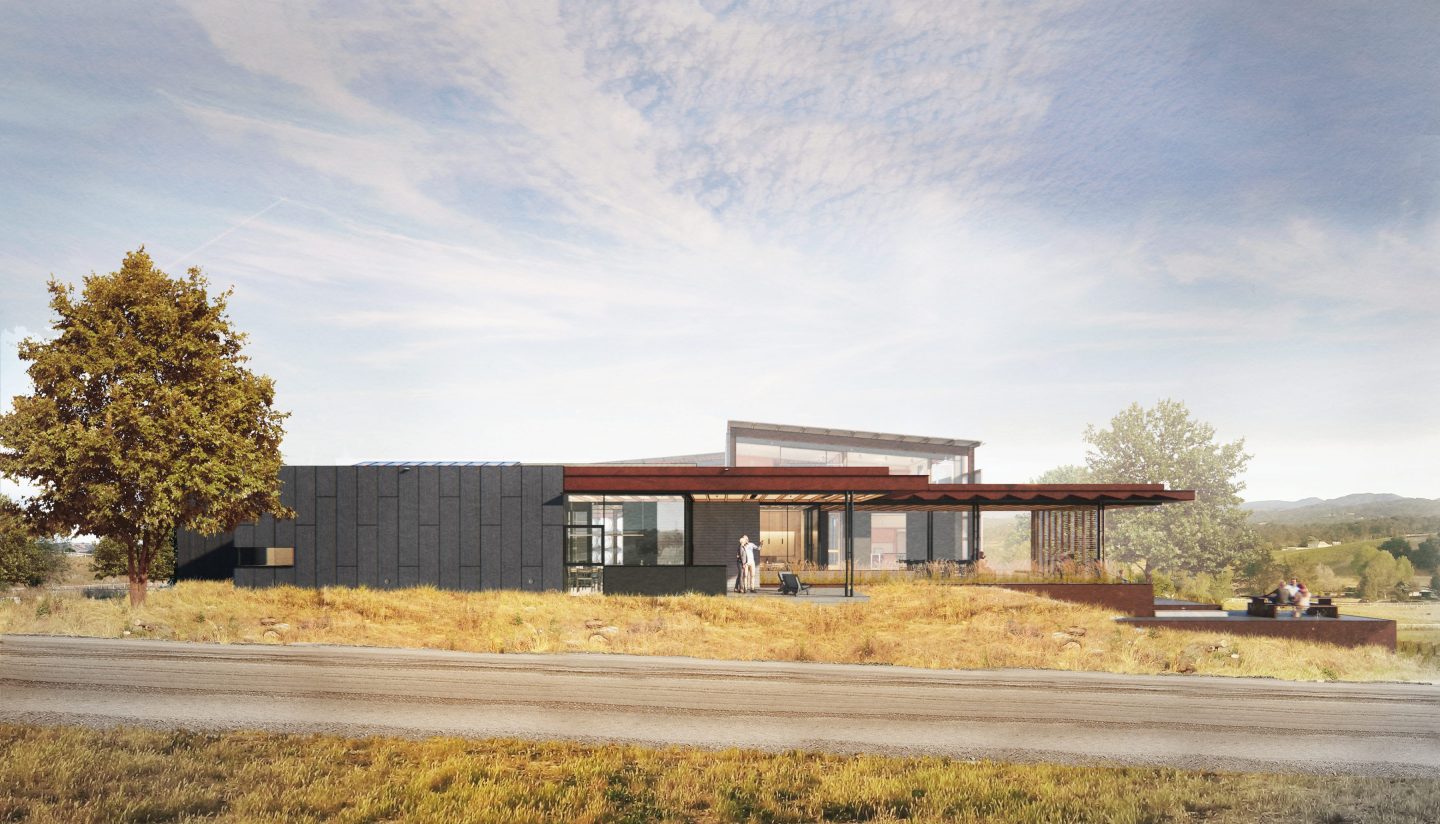
Saxum Vineyard Equipment Barn
Paso Robles, California
Located in the Templeton Gap area of west Paso Robles, California, this simple agricultural storage structure rests at the toes of the 50-acre James Berry Vineyard. Designed as a modern pole barn, the reclaimed oil field pipe structure’s primary objectives are to provide an armature for a photovoltaic roof to reduce the purchase of electric energy for the adjacent Saxum Winery, collect rainfall for irrigating trees and adjacent grazing meadow, as well as to provide workshop space and covered storage for farming vehicles, implements, and livestock supplies.
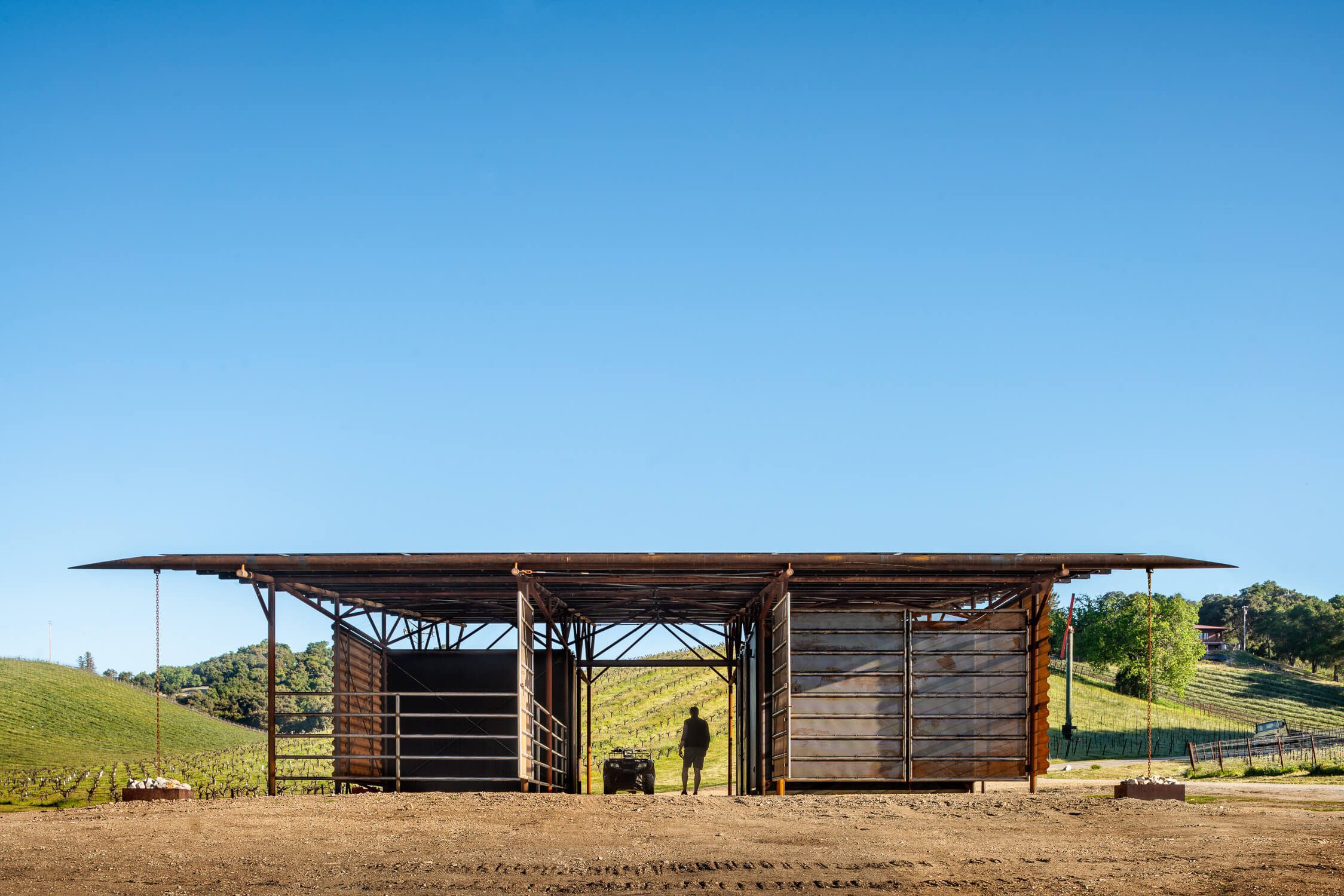
Designed to harness the local climate to maximize cross ventilation, daylight, and solar energy, the recycled oilfield pipe structure holds a laminated glass photovoltaic roof system that reduces the purchase of electric energy by roughly 88,697 kWh per year.
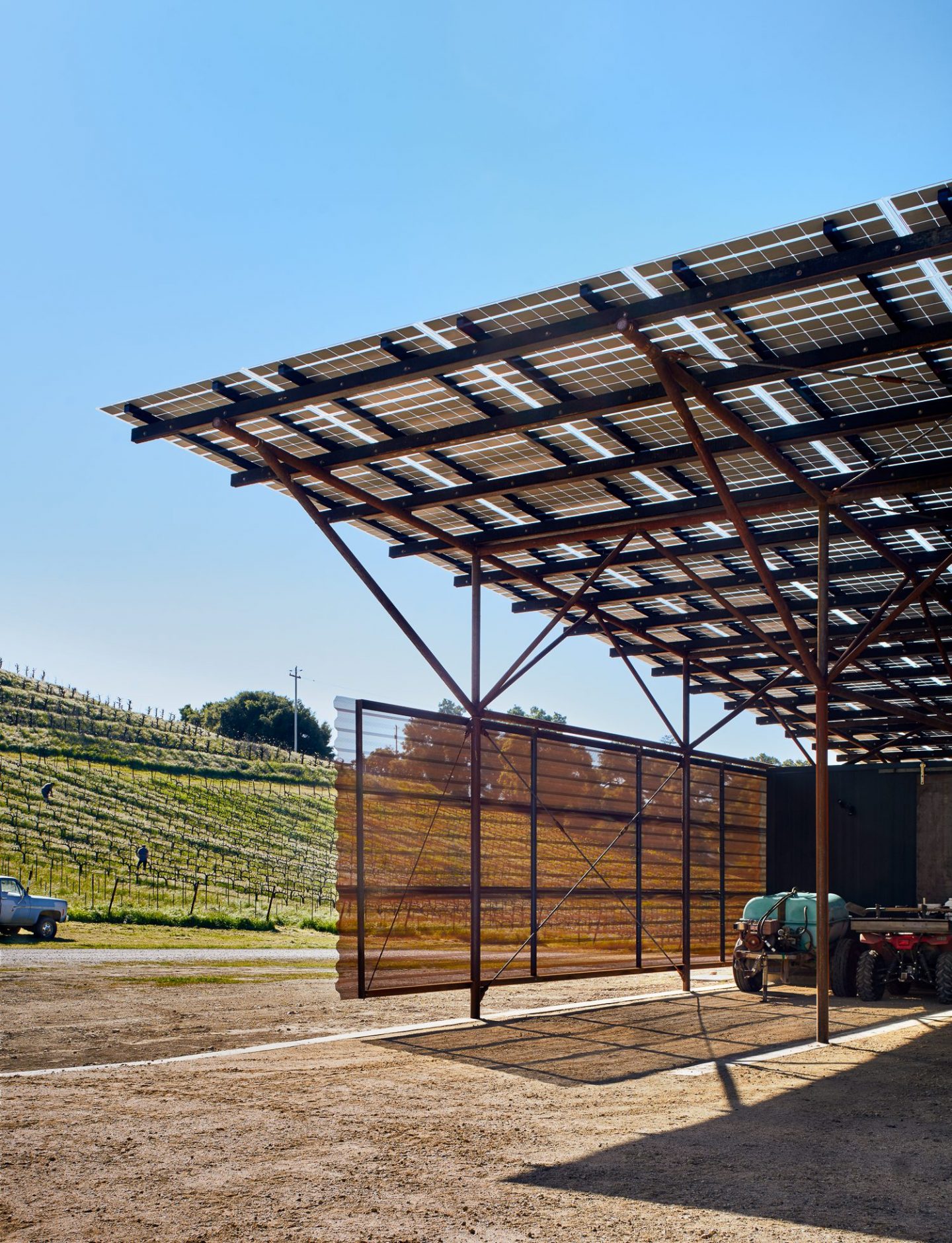
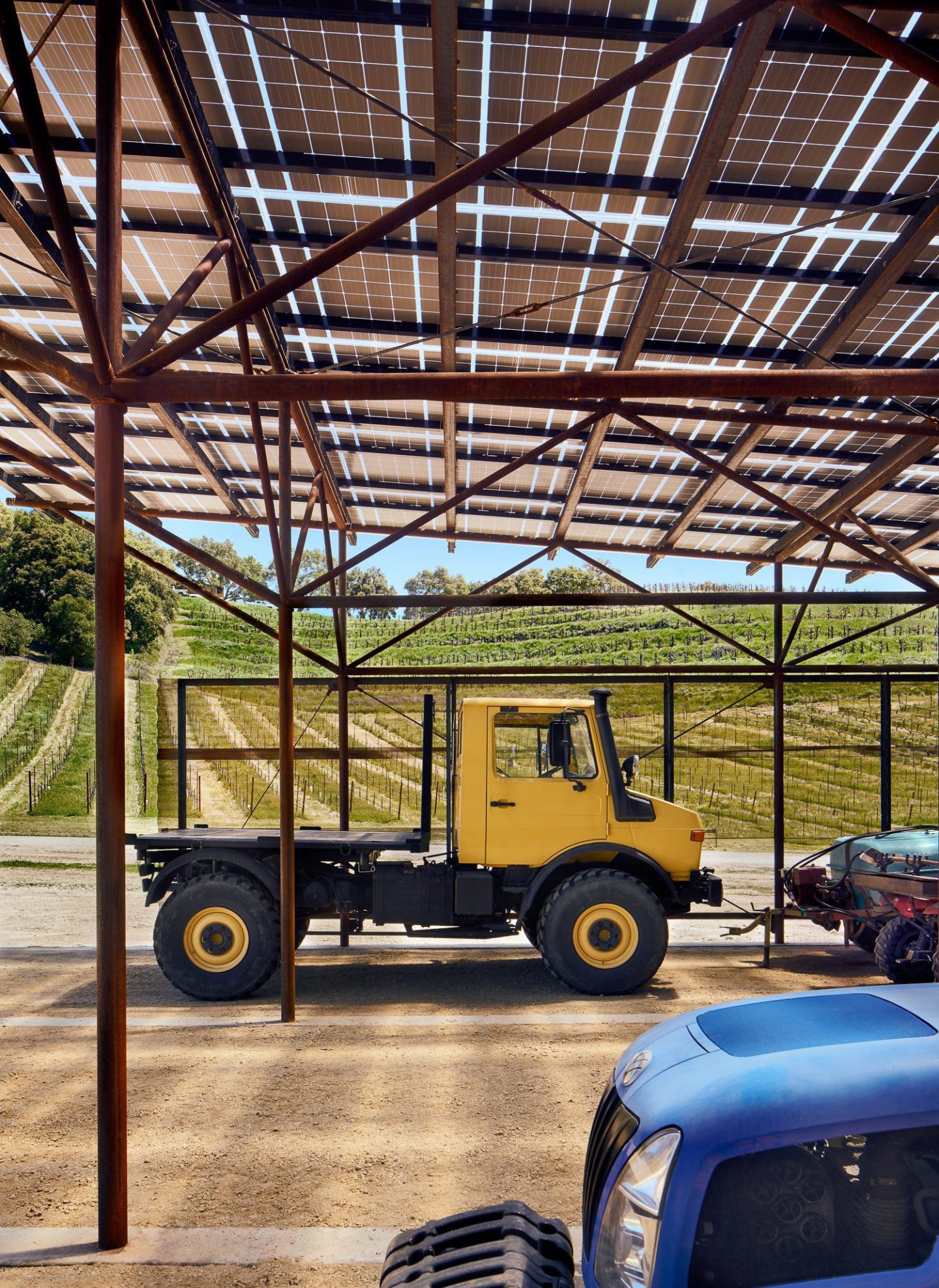
Minimalistic materials were selected to withstand the particularly dry climate, for regional availability, long-term durability, and minimal maintenance. The primary column and roof structure is constructed of welded Schedule 40 reclaimed drill stem pipe, in 2”, 3”, and 3.5” diameters, left to weather naturally. The lateral load resisting system consists of diaphragm rod cross-bracing and vertical tension only cross-braced frames. Laminated glass solar modules, serving as both the solar system and the roofing, are supported on wood and WT steel flitch purlins welded to the pipe trusses.

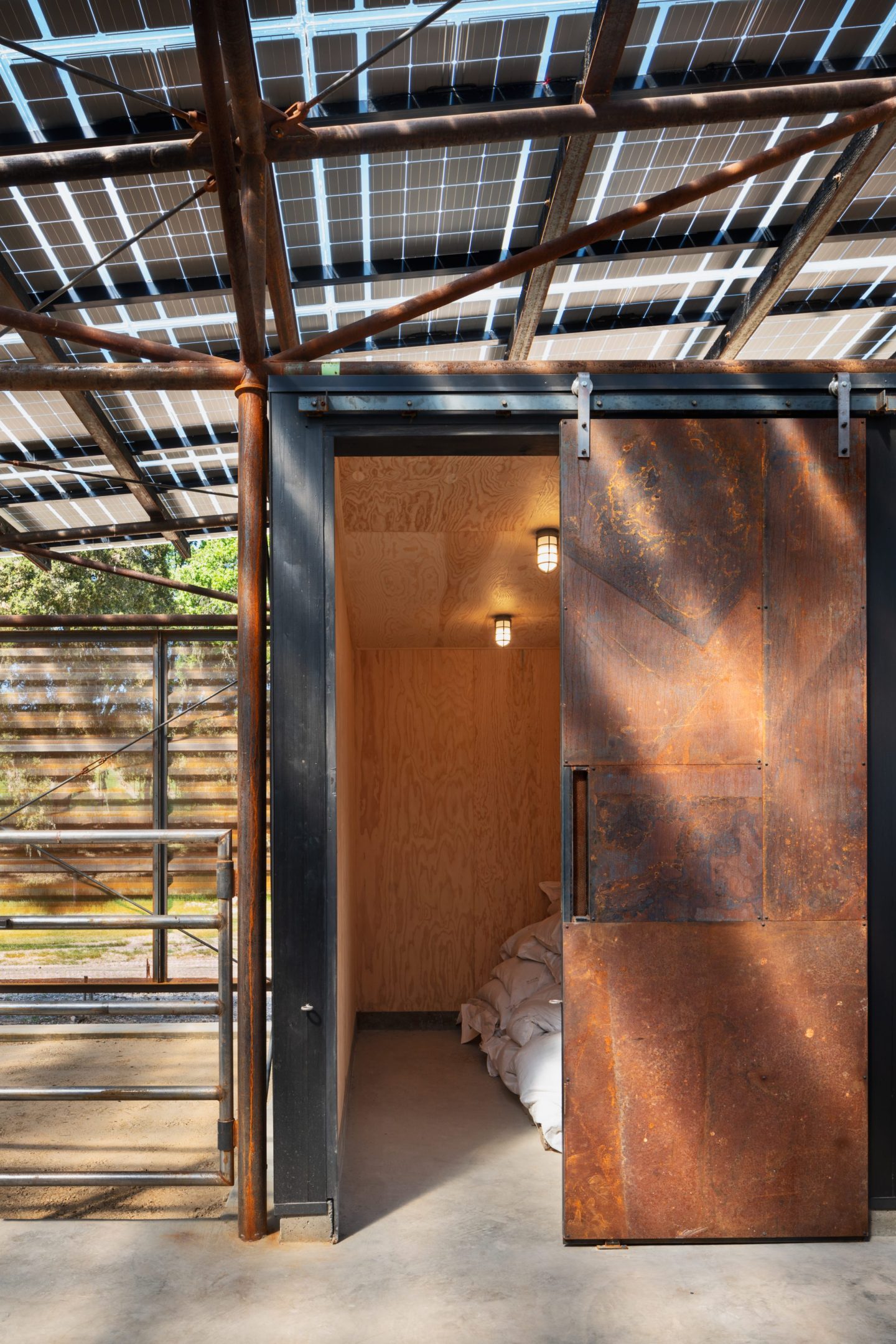
Salvaged materials do more with less. Barn doors are clad in weathered steel off-cuts that were saved for reuse from the adjacent winery shoring walls, re-used in a “calico” pattern to fit the oddly shaped panels to tube steel framed door leaves. Storage boxes are skinned with stained cedar siding with the interiors clad with unfinished rotary cut Douglas fir plywood.
Sitting sentry as the foremost structure present upon entering the vineyard lined property, the barn and its renewable energy system speak to the winery’s commitment to sustainability and subservience to the natural landscape. This structure is completely self-sufficient and operates independently from the energy grid, maximizing the structure’s survivability and resilience.
